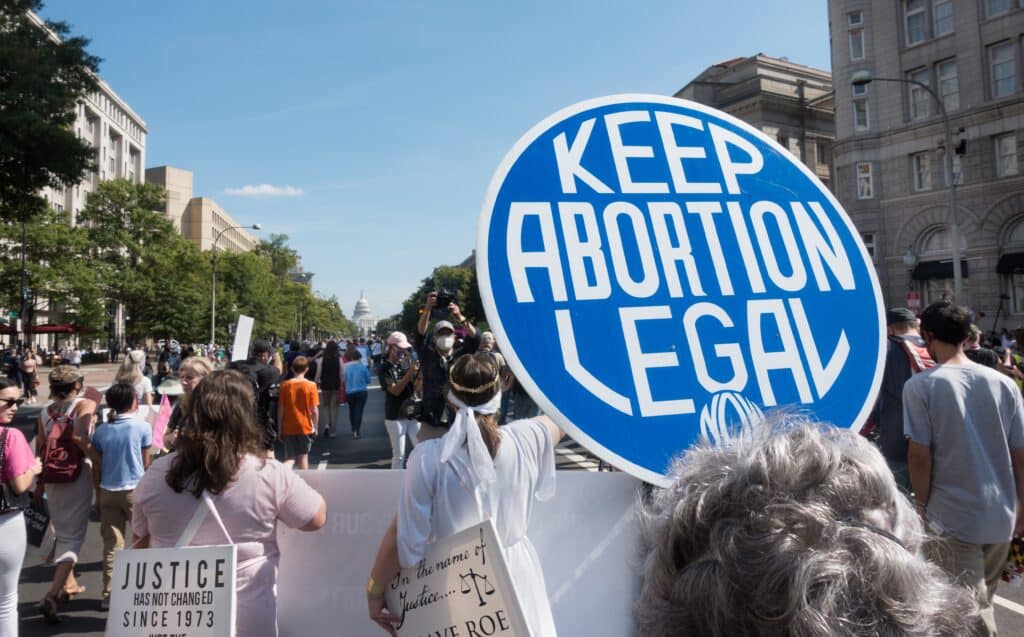Supreme Court Justice Samual Alito’s leaked opinion indicated that Roe v. Wade is about to be overturned, and with it the broader progress America has made on women’s health and wealth.
As abortion access increased across the nation after Roe, so too did women’s participation in the labor force, which allowed them to increase their wealth. Now, in a country that lacks national paid leave and affordable childcare, women’s workforce participation, health and wealth are at risk.
Denying women and pregnant people options in reproductive healthcare may result in years of economic hardship, especially when someone may be denied an abortion and goes on to give birth. In the years following a denied abortion, women who went on to give birth experienced increased poverty for 4 more years than those who were granted an abortion.
As the potential overturn of Roe exacerbates inequities in abortion care, the impact of those inequities will also differ among those affected – particularly along lines of class and race.
Low-income women are five times as likely as high-income women to have an unplanned pregnancy despite having near-identical rates of sexual activity. Income and wealth are compounding factors here: Women with more wealth can more easily access contraceptives. They are also likely to have grown up in wealthy families with continuous access to healthcare, which contributes to health literacy. Health literacy can determine not only whether an individual understands the appropriate contraceptive to use, but also provide an increased understanding of the reproductive healthcare system as a whole. Wealthier women, in short, are more likely to know what resources are available to them – in addition to being better able to afford them.
Difficulties in accessing contraceptives and other reproductive healthcare also reflect racial disparities: Black women are five times more likely than White women to have an abortion, while Hispanic women are twice as likely. The US already lags in Black maternal health: Black women are three times more likely to die from pregnancy-related causes than White women.
Current US policy leaves parents largely unassisted in both the economic and time burdens of raising a child. Few Americans have any paid leave and almost none have access to affordable child care. For those with unwanted pregnancies – who already tend to be living in poverty – that can make it nearly impossible to rebound financially. In 2015, the USDA found the cost of raising a child through age 17 is more than $233,000 – more than it costs to send a child to college in any state. Giving birth in California, for example, costs $26,380. Without universal paid leave, women may have to take unpaid leave or leave the workforce altogether. Without the protection of abortion healthcare, the poor may continue to get poorer. Giving birth can plunge low-income women into further poverty, and poses serious health risks (eclampsia and postpartum hemorrhage, for example).
Although 18 states have “trigger laws” in place for when Roe might be overturned, many blue states are attempting to become “sanctuary states.” New Jersey, Connecticut, Maryland, Colorado and others are working to make abortions and abortion care accessible to their own residents and also to the residents of neighboring states. The existence of these “sanctuary states” further adds to out-of-pocket cost, where high-income people can likely afford to travel long distances for an abortion while those with low incomes will struggle to do so. Some states, like Oregon, are working to allocate money to both assist abortion providers and cover travel costs for low-income women.
Such policies can only soften the blow. Justice Alito’s draft opinion casts a dark cloud on the future of wealth mobility and health equity in America.
Alishah Khan was an NCRC Health Equity spring intern.
Photo by Bob Korn courtesy of Shutterstock.



